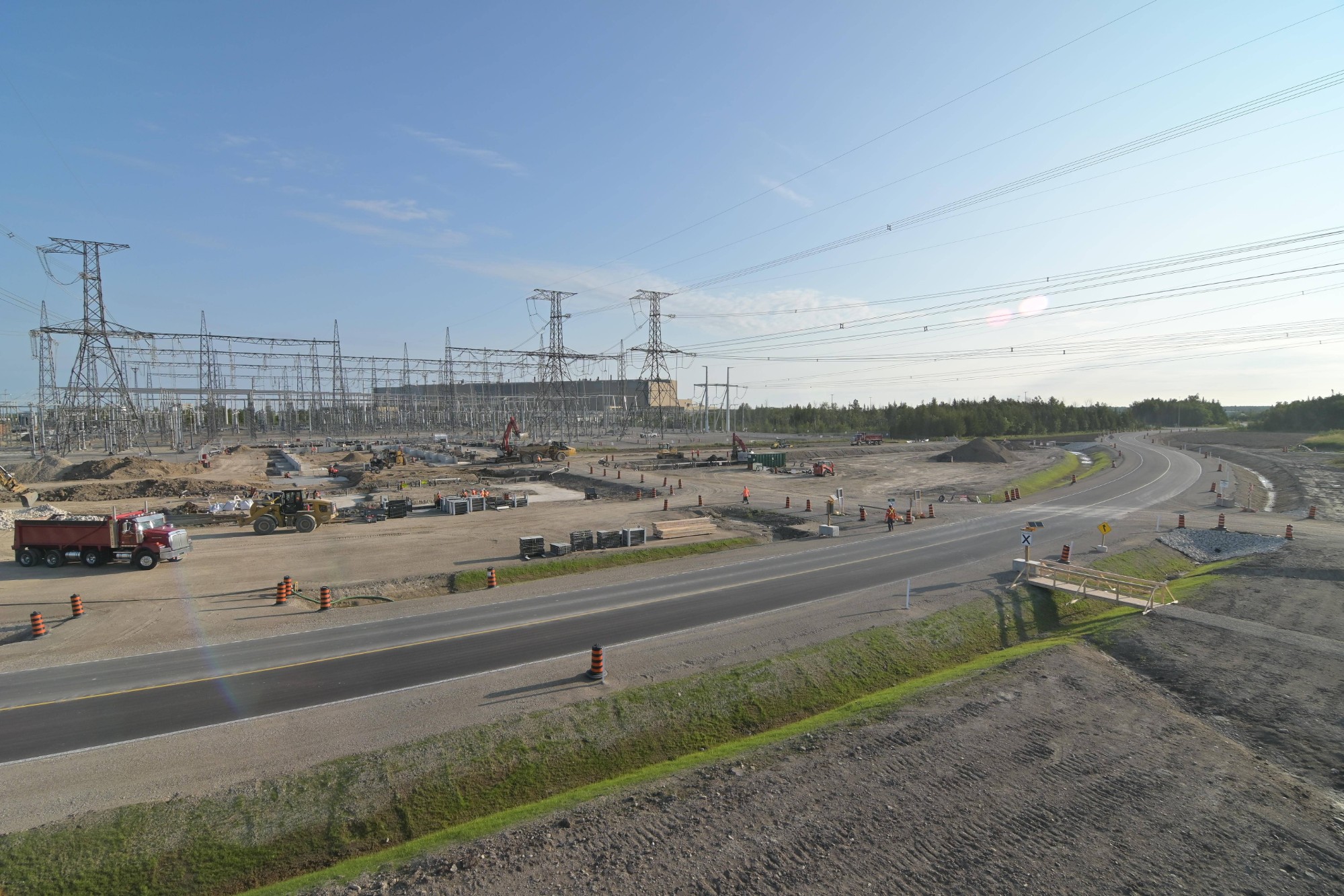Navigating the path towards diverse energy generation

Electrification is a decarbonization strategy focused on converting non-electric sources of energy to electricity – ideally sustainably generated electricity. And we are seeing this strategy being embraced by governments and industry on a global scale. Because of this, the architecture, engineering, and construction (AEC) industry is going through a transformative shift in how we support the generation and distribution of power.
As we look towards this future, it's important to acknowledge that meeting the growing global energy needs will require a multifaceted approach, leveraging all sources of generation, including hydro, wind, solar, battery storage, cogeneration, natural gas, nuclear, and even coal, alongside emerging technologies such as Small Modular Reactors (SMRs). Each source plays a pivotal role, adapted to the unique geographic, economic, and social landscapes worldwide.
Navigating Infrastructure Challenges
As we continue our electrification journey, the industry faces the major task of upgrading and expanding current infrastructure to accommodate increased capacities and the integration of disparate energy sources. This not only entails physical grid enhancements to withstand the variability and distributed nature of renewables, but also advancements in grid management technologies like smart grid solutions. Smart grid solutions are advanced technology systems designed to optimize energy flow, enhance efficiency, and ensure reliability and sustainability of electricity distribution networks. By integrating digital communication, automation, and real-time data analysis, smart grids enable more precise control over electricity flow, supporting energy management.
The evolving energy landscape demands significant investment in infrastructure and technology. For example, the Canadian province of Ontario illustrates the complexity at play, highlighting a mix of nuclear, hydro, wind, and solar power, each contributing differently to the province's energy portfolio. The balancing act of optimizing this mix, while upgrading transmission lines and incorporating technologies like grid-scale batteries and demand response measures, highlights the intricate road ahead.
Embracing a Comprehensive Mix of Energy Sources
To understand the transition towards electrification, it is essential to understand the composition and impact of various energy sources. Each generation source has it's benefits and limitations, which is why having a diverse mix will be key to an electrified future.
Hydroelectric Power: A cornerstone of clean energy, hydroelectric power significantly contributes to regions with abundant water resources. It offers a stable, low-cost generation method, albeit with environmental considerations regarding ecosystem disruption. It is challenging for new hydroelectric projects to get off the ground due to the environmental impacts.
Wind and Solar Power: Natures greatest resources are at the forefront of the renewable energy surge. These technologies are pivotal in reducing greenhouse gas emissions but require significant advancements in storage solutions to address their intermittent generation patterns.
Battery Storage: This technology is key to the wider use of renewables and is advancing rapidly. Battery storage improves power grid reliability and efficiency by managing supply and demand fluctuations. Previously battery storage technology had had capacity limitations and was expensive, but we have seen major advancements in the technology in recent years.
Hydrogen storage technology: another form of energy storage where electrical power is converted into hydrogen. This energy can then be released again by using the gas as fuel in a combustion engine or a fuel cell. Hydrogen can be produced by the electrolysis of water, making it a low emissions method.
Cogeneration: Utilizes waste heat from electricity production for additional purposes. Cogeneration increases the overall efficiency of power generation, displaying an innovative approach to maximizing resources.
Natural Gas: Natural gas is less carbon-intensive than coal and offers flexibility to complement intermittent energy sources, supporting grid stability. It is still a fossil fuel, but serves as a more sustainable “bridge” to support grid stability.
Coal: Despite its environmental footprint, coal remains part of the energy mix in various provinces and countries, primarily due to economic and resource availability factors. Advanced clean coal technologies are actively being developed to mitigate its environmental impact.
Nuclear Power: With a noteworthy capacity for low-carbon, high-output generation, nuclear power, through emerging SMR technology, is regaining attention as a sustainable energy source that can meet baseload demands without the geographical constraints of renewables.
The Promise of Small Modular Reactors (SMRs)
SMRs have emerged as a game-changing technology with the potential to revolutionize nuclear power. Their smaller size compared to traditional nuclear reactors offers increased flexibility, lower initial capital investment, enhanced safety features, and the ability to integrate into existing grids with less infrastructure overhaul. SMRs could play a critical role in providing steady, low-carbon energy, particularly in remote or off-grid locations.
The Path Forward
Stuart Olson's strategic partnership with Bird Construction represents a significant step forward in enhancing their combined service offerings. This collaboration leverages the strengths of both companies, providing clients with an integrated approach to energy solutions and helping bridge the transition toward electrification. Understanding the varied energy landscape (as detailed above) is essential for this transition.
The future of electrification combines traditional and innovative energy sources to create a resilient energy system. This comprehensive energy mix highlights the importance of Stuart Olson and Bird's unified approach, enabling them to offer innovative, reliable, and sustainable energy solutions to their clients. As we enter this new era, it is critical that we collectively focus on innovation, conservation, and diversification.
